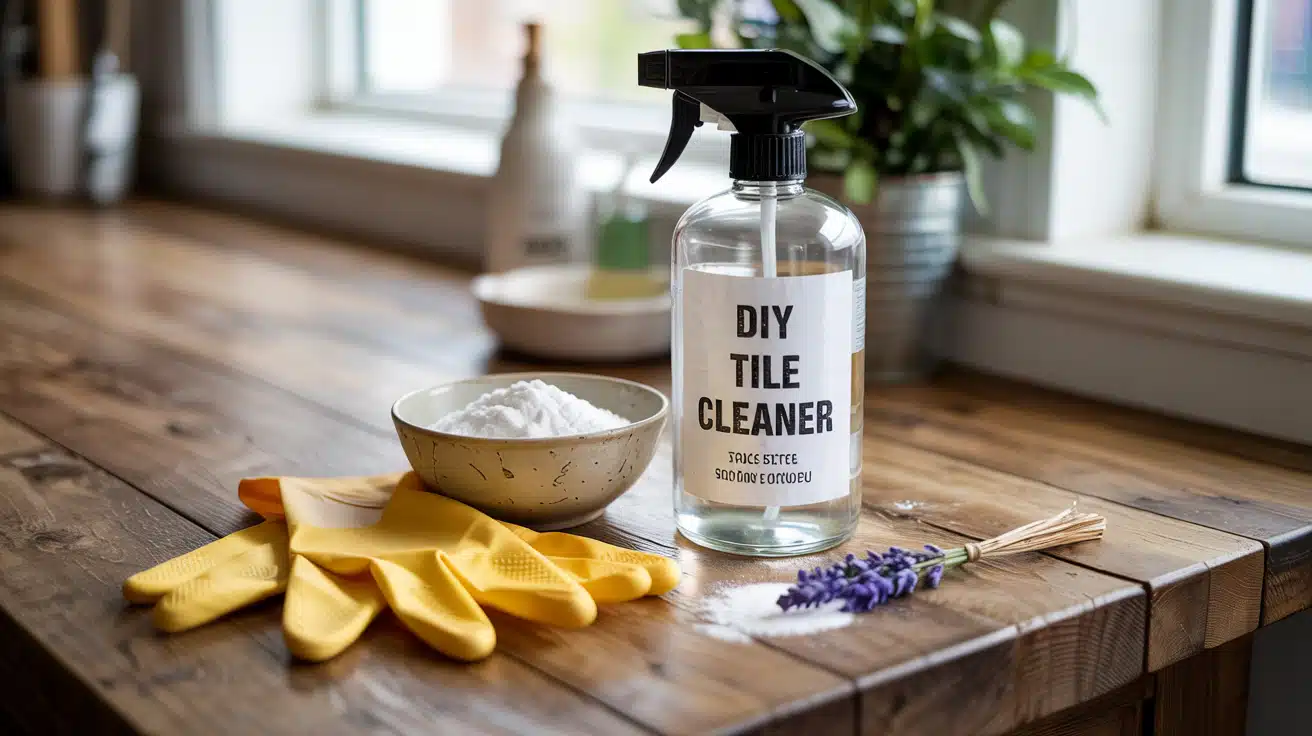Seeking a cost-effective and eco-friendly method to clean your tiles? With just a few common household ingredients, you can create your DIY tile cleaner that works well on grout, soap scum, and everyday dirt.
Why spend money on store-bought cleaners filled with harsh chemicals when you can easily make a cleaner that’s both effective and safe for your home?
In this, we’ll show you how to use simple, natural ingredients like baking soda, vinegar, and essential oils to create your tile cleaner.
Not only will you save money, but you’ll also have peace of mind knowing your cleaner is free from harmful toxins.
We’ll share tips on how to maintain the look of your tiles and keep them looking new longer.
Get ready to take control of your tile cleaning routine and say goodbye to store-bought products with this easy DIY guide! Let’s get cleaning!
Why Choose a DIY Tile Cleaner?
Making your tile cleaner offers numerous benefits that not only save you money but also contribute to a healthier home environment. Here are some key reasons why you should consider switching to a DIY tile cleaner:
Cost-Effective: DIY cleaners are often made from common household ingredients, allowing you to save money compared to store-bought cleaners.
Chemical-Free: Many commercial cleaners contain harsh chemicals that can be harmful to your health and the environment. DIY cleaners use natural ingredients like vinegar and baking soda, making them safer for you and your family.
Eco-Friendly: By using eco-friendly ingredients, you reduce your carbon footprint and contribute to a cleaner planet.
Customizable: You can adjust the formula to suit your cleaning needs, whether it’s tackling grout stains or preventing soap scum build-up.
Easy to Make: DIY cleaners are simple and quick to make, often requiring just a few ingredients you likely already have in your pantry.
Effective Results: Natural ingredients like baking soda and vinegar effectively break down dirt, grime, and stains without damaging your tiles.
Opting for a DIY tile cleaner is a simple, sustainable choice that delivers great results while promoting a healthier home.
Materials Required and Their Purpose
These are the materials required to make a DIY tile cleaner.
| Materials required | Purpose |
|---|---|
| Texapon | Surfactant helps dissolve dirt and grease |
| Salt | Thickening agent |
| Soda Ash (Sodium Carbonate) | Alkaline cleaning agent thickens the solution |
| Baking Soda (Sodium Bicarbonate) | Alkaline cleaner boosts cleaning power |
| Chloroxylenol | Antibacterial agent |
| Fragrance | Adds a pleasant scent |
| Sulfonic Acid | Improves viscosity and texture |
| Water | Solvent for creating the slurry and mixing the ingredients |
DIY Tile Cleaner: A Simple How-To Guide
Here’s a step-by-step guide to creating your DIY tile cleaner. Follow these clear steps to make an effective alkaline cleaner for daily use, ideal for grease and food stains.
Step 1: Prepare the Base Ingredients
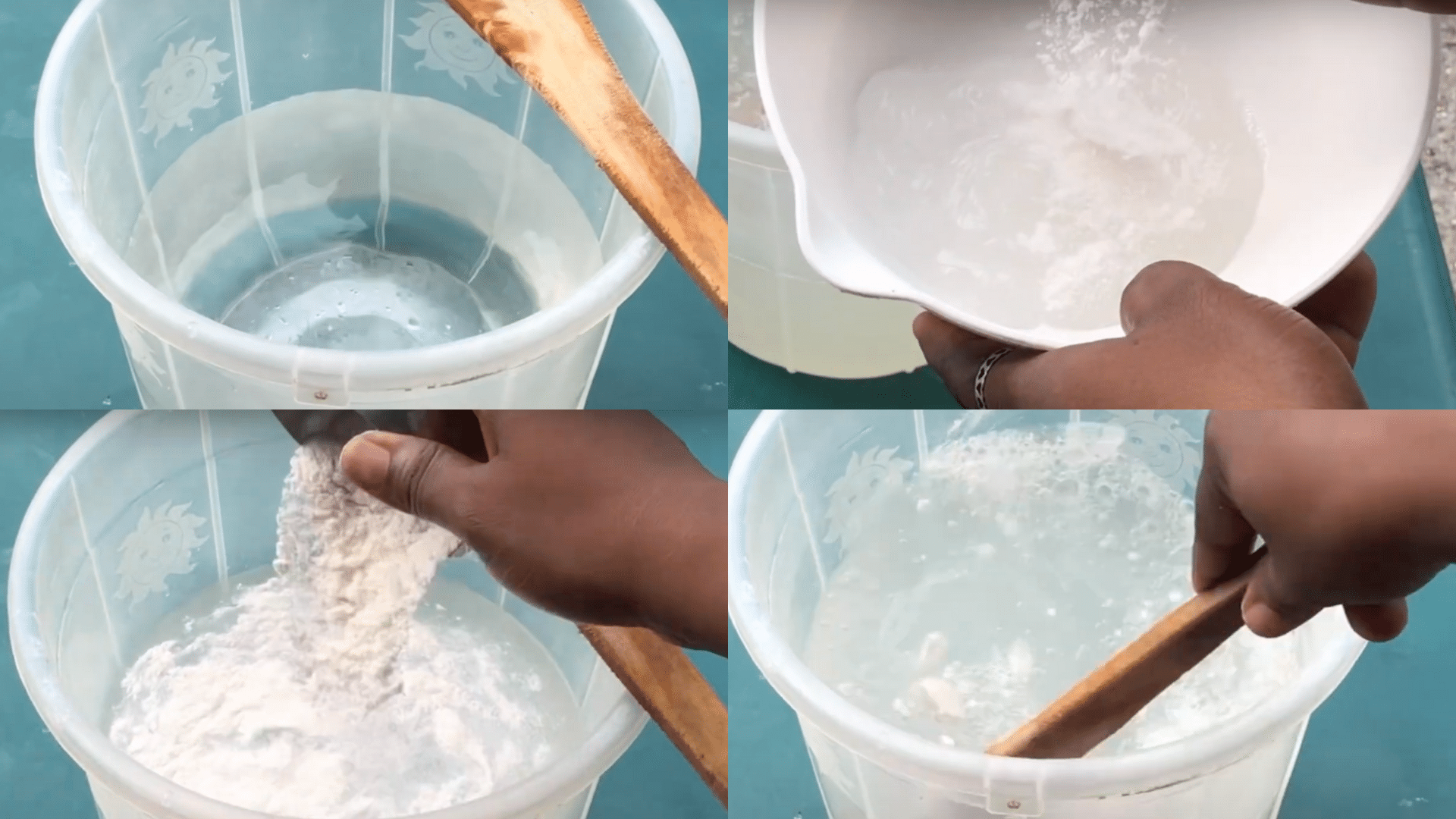
- Combine Base Ingredients: Mix Texapon (a surfactant) and salt in a bowl to create a thick paste.
-
Create Slurry: Gradually add water, starting with half of the total amount (approximately 1 liter), to form a slurry. This mixture helps dissolve Texapon more quickly, making it easier to work with.
Pro Tip: To help Texapon dissolve faster, mix it with salt before adding water. This will ensure the mixture is smooth and quick to prepare.
Step 2: Add Key Active Ingredients
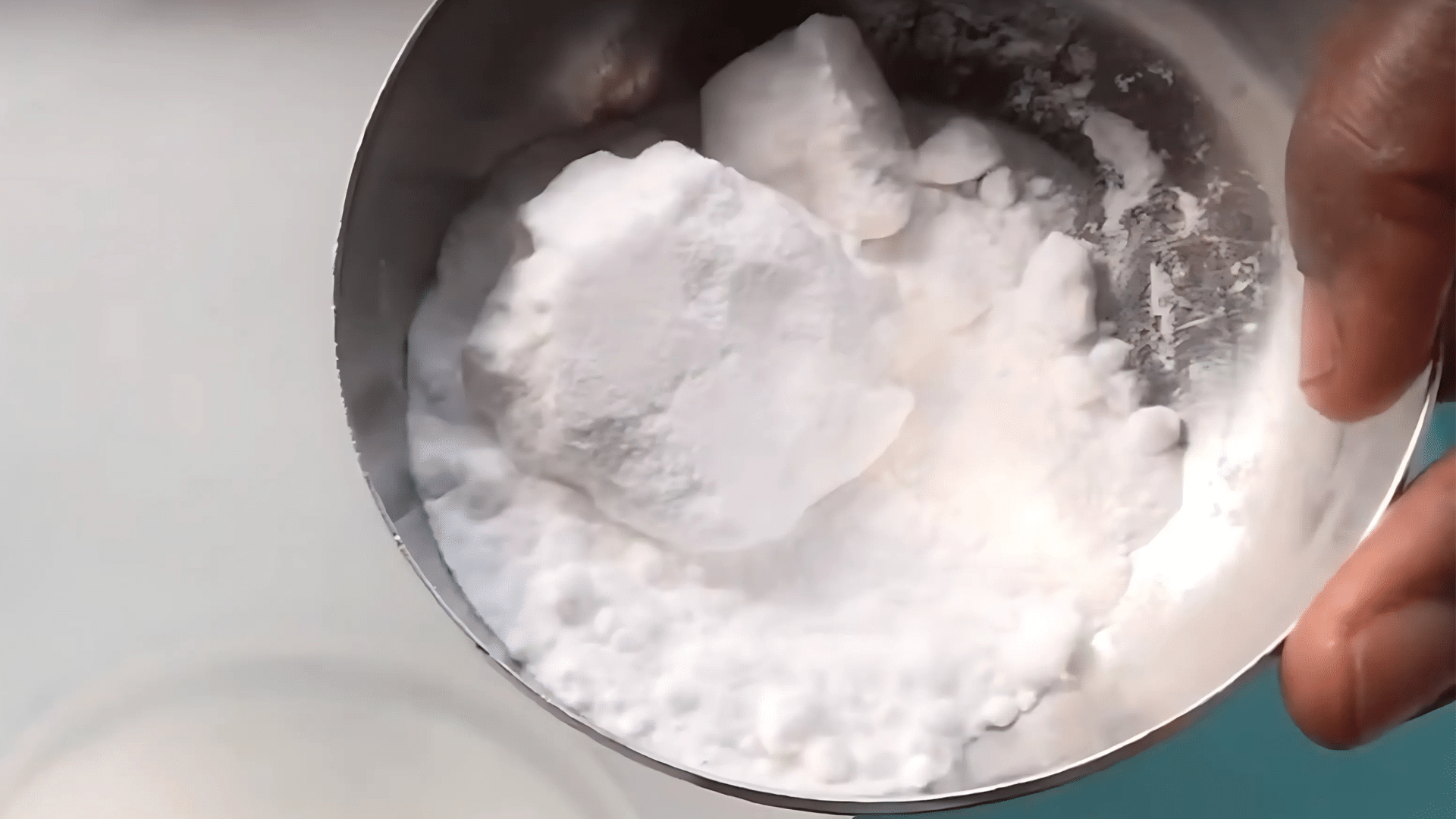
- Soda Ash & Baking Soda: Add equal parts of Soda Ash (Sodium Carbonate) and Baking Soda (Sodium Bicarbonate). These ingredients will help thicken the solution and act as powerful cleaning agents.
-
Stir and Mix: Gradually add the soda mixture to your slurry and stir until you achieve a thicker consistency.
Pro Tip: If you’re short on baking soda, you can increase the amount of soda ash, but avoid using too much to prevent the solution from becoming too harsh.
Step 3: Add Antibacterial and Fragrance Components
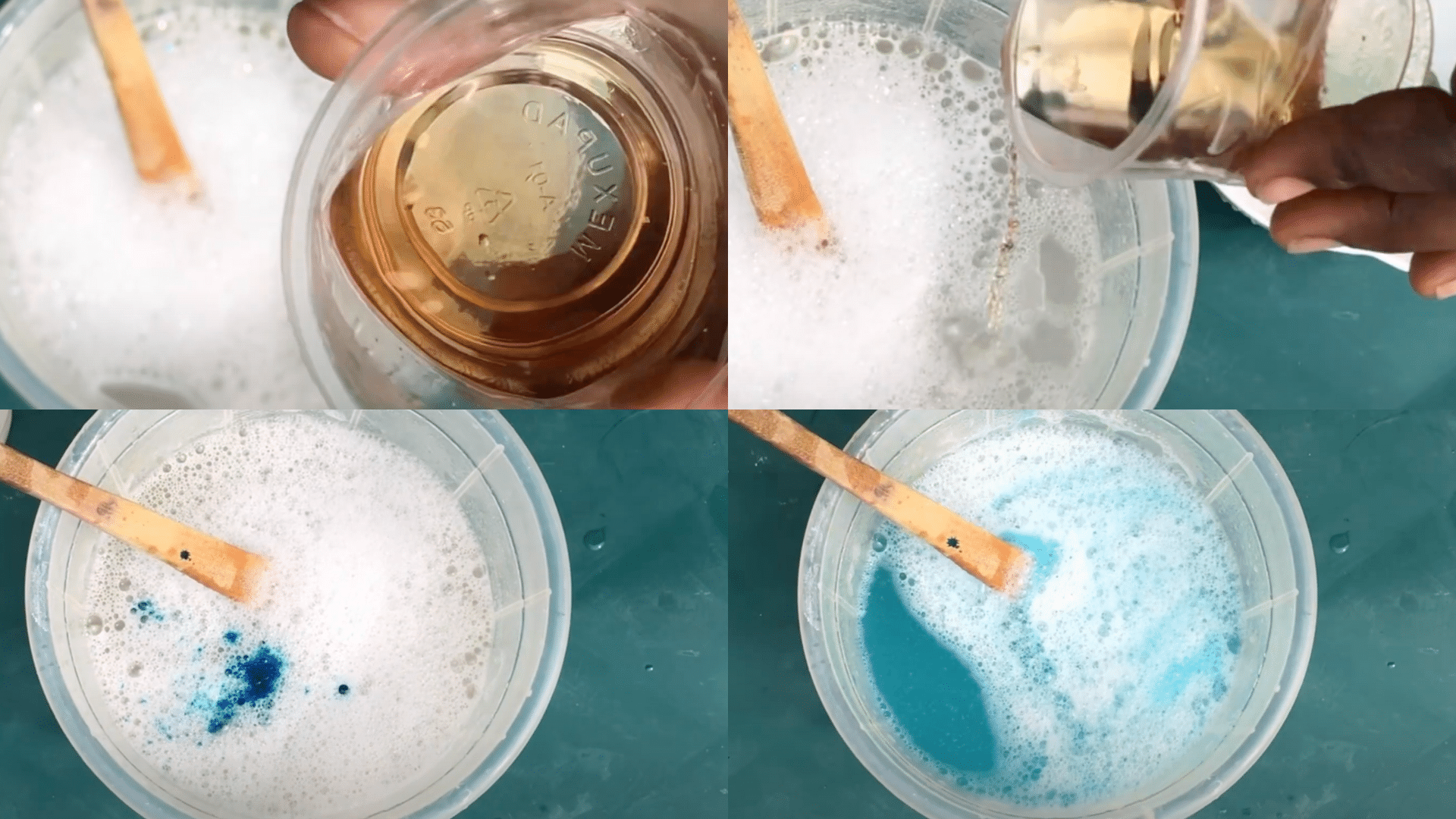
- Incorporate Chloroxylenol: Add Chloroxylenol, an antibacterial agent commonly found in antiseptics, to help kill germs and bacteria during cleaning.
-
Fragrance and Color: Add fragrance and color (optional) to make the cleaner smell fresh and pleasant. Use around 60–80ml of fragrance, depending on your preference.
Pro Tip: Use a non-alcoholic antibacterial agent for maximum potency without compromising the cleaner’s effectiveness, especially around children.
Step 4: Final Touches and Bottling
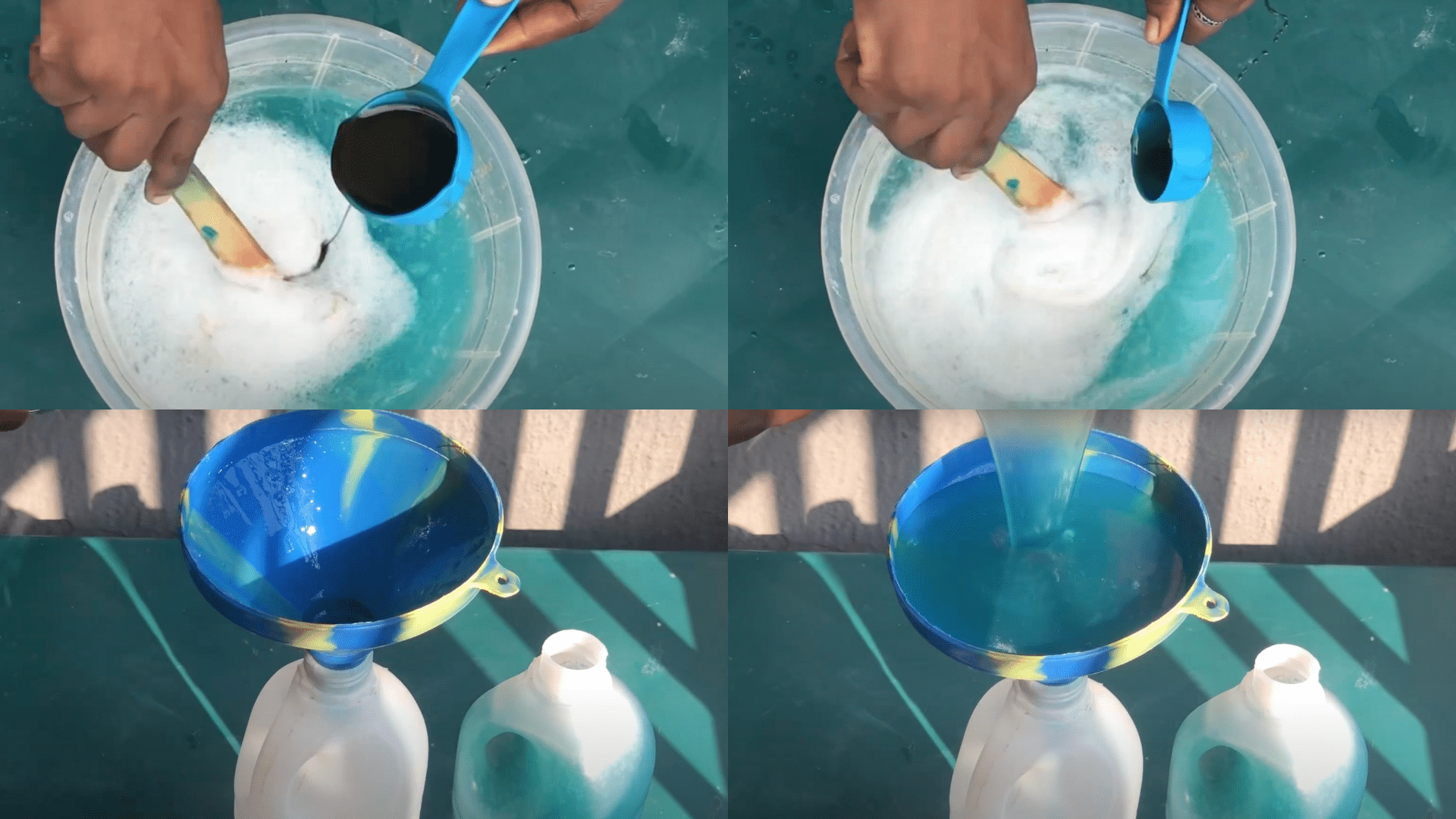
- Add Sulfonic Acid: To improve the texture and viscosity, add a small amount (60- 80 mL) of Sulfonic Acid. This will help the solution thicken and bind with the surfactants.
-
Bottle the Cleaner: Once the mixture has settled, pour it into a bottle for use. Allow the foam to settle before sealing it.
Pro Tip: Avoid adding citric acid as it can turn the solution watery. Ensure all ingredients are well-blended for a smooth, thick cleaner.
With these simple steps, you can create a powerful and effective DIY tile cleaner that’s safe, eco-friendly, and budget-friendly!
Video Tutorial
Check out this video by @Bamgfoodsdiy for a step-by-step guide on how to make a DIY tile cleaner.
Other Home Remedies for Cleaning Tiles
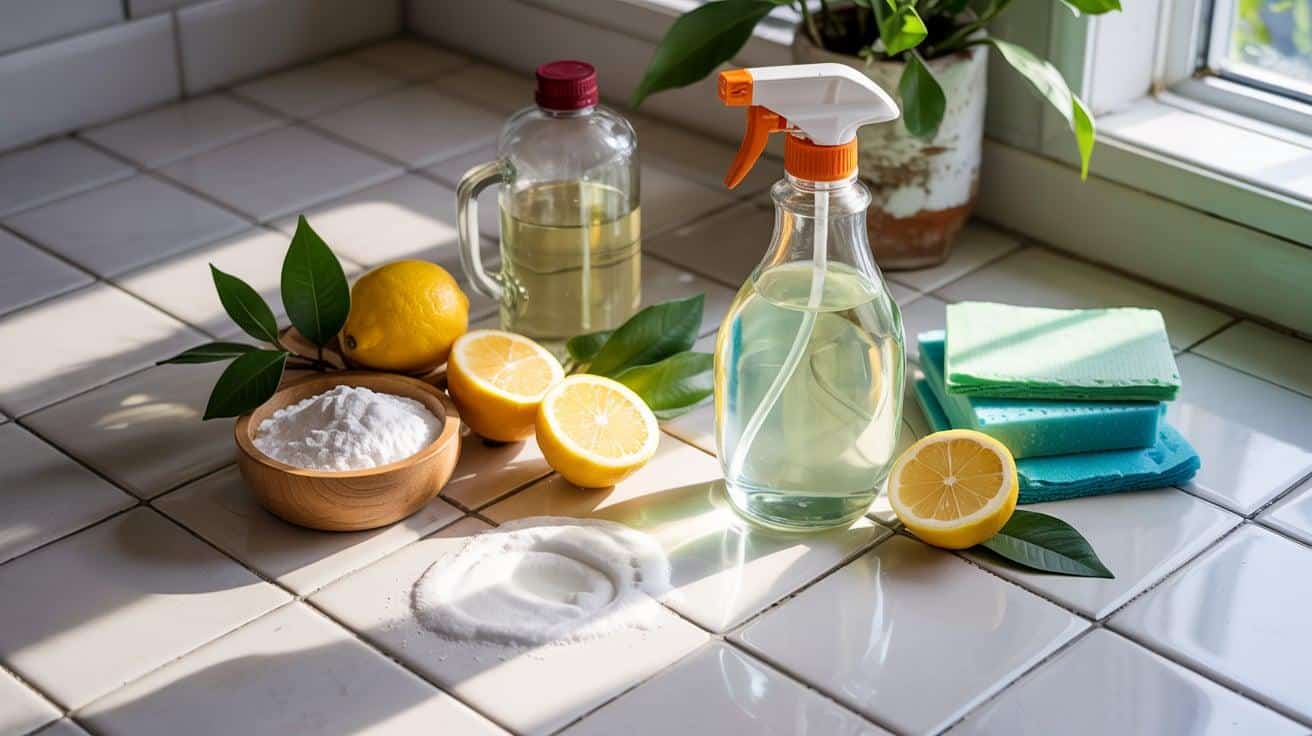
Here are some additional effective home remedies for cleaning tiles that will help keep your surfaces sparkling clean and fresh:
Rubbing Alcohol and Water
- How it works: Rubbing alcohol cuts through grease and disinfects surfaces.
- How to use: Mix equal parts rubbing alcohol and water in a spray bottle. Spray on tiles, then wipe clean with a cloth.
Borax and Water Solution
- How it works: Borax is a natural mineral that helps remove stains and dirt while also deodorizing.
- How to use: Mix 1/4 cup of borax with a gallon of warm water. Mop or wipe the tiles with this solution and rinse afterward.
White Vinegar and Baking Soda Grout Cleaner
- How it works: This combination helps lift dirt from grout and tiles, brightening the surfaces.
- How to use: Apply baking soda directly to grout, then spray white vinegar over it. Let it fizz and sit for a few minutes before scrubbing.
Salt and Water Paste for Stubborn Stains
- How it works: Salt’s abrasiveness helps scrub off tough stains from tiles without causing damage.
- How to use: Mix salt with a small amount of water to form a paste. Apply to stubborn stains, scrub gently, and rinse thoroughly.
Tea Tree Oil and Water Disinfectant
- How it works: Tea tree oil possesses natural antibacterial properties, making it an effective disinfectant for tiles.
- How to use: Mix 10-15 drops of tea tree oil with a cup of water in a spray bottle. Spray on tiles and wipe with a clean cloth.
Castile Soap and Water for Gentle Cleaning
- How it works: Castile soap is gentle yet effective at cleaning tiles and grout, eliminating the need for harsh chemicals.
- How to use: Add a few squirts of Castile soap to a bucket of warm water. Mop the tiles with this solution for a safe and gentle clean.
Club Soda for Sparkling Tiles
- How it works: Club soda helps lift dirt and gives tiles a streak-free shine.
- How to use: Pour club soda directly on the tiles or use a spray bottle. Wipe clean for a sparkling finish.
Final Thoughts
These simple, cost-effective homemade tile cleaner recipes can give you clean tiles without harsh chemicals.
You might prefer a classic vinegar and baking soda mixture or try natural ingredients like essential oils and hydrogen peroxide – you have many options to maintain fresh, shiny tiles.
These DIY cleaners not only save money but also keep your home safe and environmentally friendly.
With the proper tools and methods, you can effectively remove stubborn stains, care for your grout, and add a pleasant, natural scent to your home.
Now that you know how to make your tile cleaner, it’s time to give your floors proper care.Begin today and feel satisfied with clean, attractive tiles that complement every step!
Ready to clean? Gather your ingredients and start your DIY cleaning now!

